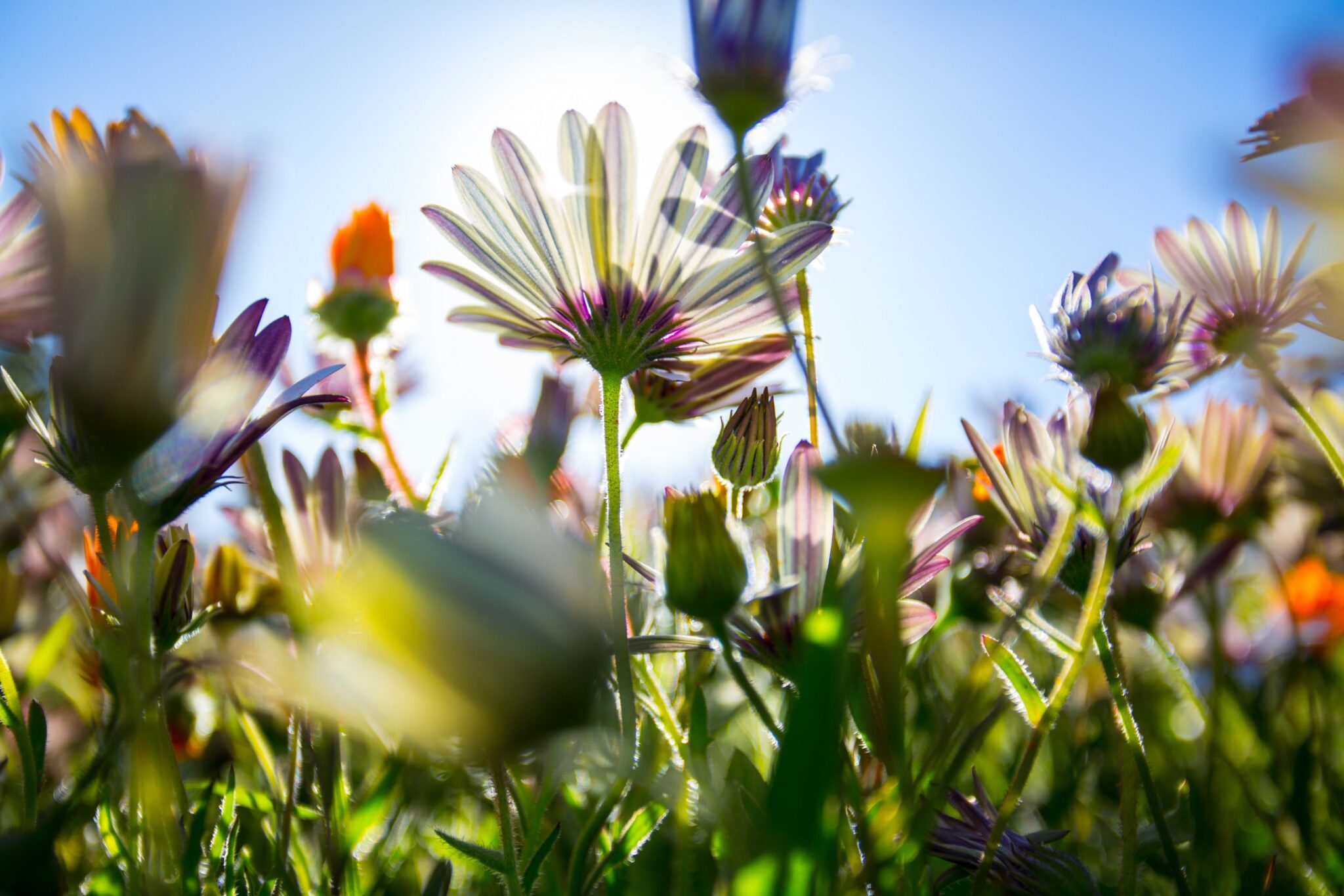Transforming your Lawn into a Wildlife Oasis: Protecting American Wildlife from Home
Wildlife needs our help more than ever before. Human activity means habitats have been destroyed and unless we take responsibility, we’ll lose even more species. More than 150 US species are already extinct and pollinator populations are dropping at a huge rate, with monarch butterflies in the eastern US down 90% in the past 20 years. While it may seem like you can’t make a huge difference on an individual level, there are plenty of things you can do.
The wilderness and habitats for indigenous species have been destroyed or are at risk. Many insects and creatures we consider commonplace are becoming endangered. A Bumble Bee species was added to the endangered list for the first time in 2017 and this is just one of many bugs we see in our yards which is on the verge of disappearing.
One way to try and reverse this and make a change is to create your own wildlife environment in your back yard and throughout your neighborhood. Creating a welcoming and inviting space for wildlife in your yard is easy and you’ll get to enjoy the beauty of nature while contributing to its survival.

Planning and Organizing your Wildlife Habitat
Once you’ve decided to turn your backyard into an oasis for all things wild, you’ll need to ensure you have the following in place:
- Food: a yard packed with native plants provides the nectar, fruits, foliage, berries, pollen and even insects that wildlife needs. You can also provide supplementary food in feeders.
- Water: water could be available in the form of a pond or something as simple as a bird bath, for drinking and washing.
- Cover: shelter is essential for wildlife to survive, so you could look at providing bird and bug houses or simply have spaces where wildlife can easily hide and take shelter.
You can go to great lengths to craft homes and shelters and provide food for wildlife, but in most instances, the best thing you can do is simply create the environment for them to thrive themselves.
The next steps involve looking more closely at your garden space and making the most of it in the following ways:
1. Identify and Understand your Plants
Take a good look at your yard and the plants you currently have, check their condition and whether you have spaces with adequate shade and places to hide and seek cover. You should also consider whether your garden currently offers adequate sources of food.
2. Plan and Design
Once you’ve identified your existing plants, shrubs and trees, sketch out an overall plan of your current yard and property layout. You could sketch out how your yard currently looks and plot where you can make changes, add in new trees and shrubs or change up the design altogether. You may want to consider removing plants that do not add to the habitat for wildlife, and you will almost certainly want to consider planting new ones, too.
3. Develop and Grow
Your wildlife habitat doesn’t have to be instant, and it will need time to grow and develop and become the habitat you’re hoping to create. Don’t be disappointed if it takes time for creatures to arrive. They need to realize and learn your yard exists first and over time, you will soon see you’ve created a highly valuable space which ensures different forms of America’s wildlife are able to thrive.
Many people don’t realize how valuable their lawn space can be for wildlife and if you’re looking to create a true wildlife sanctuary, then your lawn can be at the heart of it all. We’ll look more closely at how to design a lawn with wildlife in mind.
Cultivating a Wildlife-Friendly Lawn
Lawns provide a home for many different insects, worms, and other creatures, as well as attracting birds who feast upon invertebrates too. Standard turf lawns may look fantastic, but they don’t provide much for the environment and if you want to attract more wildlife and contribute towards their chance of a better future, keep the following ideas in mind as they’ll help you create a true sanctuary for a wide range of different species.
Cut Back on Cutting
Give up on mowing your lawn altogether, or at least for a month or a season, and the wildlife will soon feel at home. Plants already present will have the chance to grow and seeds that have been dropped by birds or blown onto the lawn have the chance to germinate and bud. An unmown lawn will quickly become awash with different flowers and plants, many of which will be packed with pollen and nectar, attracting butterflies, beetles and bees. Longer grass is also the perfect place for shelter and foraging for small amphibians such as frogs, toads and even some species of lizard.
The plants already growing in your lawn are the perfect base for a wildlife habitat. There is a time and place for cutting a wildflower lawn. You need to give the flowers a chance to bloom without grasses taking over and in time you’ll be able to create the perfect balance. Only a few centimeters in height should ever be cut, so the plants can grow naturally.
Stay Away from Chemicals and Fertilizers
One of the simplest changes you can make to benefit wildlife and the environments is to stop using weedkillers. Weedkillers kill off all kinds of plant that could attract pollinating insects and can cause harm to the insects themselves. If you do spot weeds such as nettles or thistles spreading through your lawn, try and remove them by the root rather than resorting to chemicals. Similarly, avoiding fertilizers ensures the soil is perfect for wildflower diversity. Thick, rich, fertilized soils are perfect for perfect green lawns but not quite as good if you’re trying to create a wildlife habitat.
Pesticides are often pre-injected into plants, seeds and bulbs and can be fatal for a wide range of different species. Neonics are a common form of pesticide that have been known to harm wild bees, as well as those kept for honey making. While the chemicals say they target individual “pests” this is rarely the case, and they can be dangerous to a wide range of different insects and invertebrates.
Research has shown that even pesticides labeled “pollinator friendly” have been found to have high levels of pesticides, including those neonic chemicals. Organic gardening products are readily available if you do wish to use them, but in many instances, your yard and lawn can be left to their own devices. If you are worried about pests, a wildlife friendly garden should soon attract natural pest predators such as hoverflies and birds too. Relying on nature’s natural cycles is much better for the environment and allows wildlife to thrive. Using any chemicals is going to be to the detriment of your yard as they can easily get into the water and be ingested by many species, resulting in considerable loss and devastation to both the environment and animal and insect populations.
Weeds and Wildflowers
Identifying weeds can be tricky for a novice gardener, and you don’t want a stray one taking over and ruining all your hard work. Some species of wildflower are considered weeds but in reality, they are fantastic pollinators and a perfect addition to your wildflower lawn. Lesser celandine, bird’s foot trefoil and selfheal are three perfect examples of “weeds” that are ideal for attracting wildlife to your yard.
To improve the diversity of your wildflowers, you could even plant directly onto your lawn. Plants such as red clover, musk mallow and yarrow are perfect for pollinators. Also consider other plants that are great for lawns. These include cowslip and red campion, as they aren’t bullied by grasses and won’t be easily swamped. Many of these plants are great for pollinators but they also double up as perfect food plants for other creatures such as caterpillars. If you don’t know where to start with plants, even a few packets of wildflower seeds could do the job, scattered liberally around your lawn. One of the key things to keep in mind as you repurpose and redesign your yard is that it will take time, but wildlife will soon be attracted by the nectar, pollen, seeds and nuts that your garden produces.
Mix up your Grasses
Most lawns are made up of a single grass species or maybe a combination of two or three. For the perfect wildlife habitat, you should consider adding in more grasses and bring even more diversity to your yard. Different grasses will produce flowers and seeds which can be enjoyed by many creatures including birds and insects. Grasses also give more height and interest to your lawn, with different varieties coexisting with ease. If you’re looking to sow different grasses then be sure to do your research and select types which grow well together and are suitable for your climate too. Select a range of warm season or cool season grasses to suit your region.
Thyme lawns have become more popular because of their vibrancy and intense aroma. Thyme is also low maintenance, resistant to drought and dry periods and can stand a little footfall if the kids want to play out. Chamomile is also a popular and easy-to-manage option if you’re looking to add herbs to the lawn. Chamomile also offers a sweet and attractive scent and is great for wildlife.
Managing Mosses
Moss is often seen as a weed, and it can make a regular lawn look quite patchy and uneven. When it comes to wildlife however, mosses are a really valuable addition to your yard. Moss provides both shelter and food for many species of invertebrate and many other species of wildlife benefit, too. Mosses can grow almost anywhere, and they can make a bare lawn look greener and more luscious. Moss lawns are particularly common in Japan due to being so low maintenance and requiring no mowing. Larger animals can also benefit from mosses in your lawn, as birds can use them for nesting material, and they provide additional food for other species. The moisture moss produces can also be a source of water for some smaller insects and invertebrates.
Other Considerations for your Home Wildlife Oasis
Other considerations for your wildlife lawn will depend upon your yard in general. If you have a tree in your lawn, you can surround it with plant bulbs, which provide a vital source of nectar for pollinators. Crocus, bluebells and snowdrops help bumblebee queens survive the first weeks after coming out of hibernation. You may also want to consider cultivating red clover as it really helps bee populations.
If you want to be able to walk through and enjoy your lawn then there’s nothing wrong with a single mown path through the middle, allowing you to enjoy the wildlife paradise you’ve created. You can also teach younger family members the importance of looking after our natural environment and creating a home for wildlife.
It’s also possible to choose a section of your yard and make that a home for wildlife, if you’re not ready to transform your whole lawn. You could section off a wildlife area and let this space grow wild, and cultivate plants and trees which are just perfect for creatures of all shapes and sizes. Another option is to create a border around your lawn and fill this with bright, eye-catching wildflowers so it becomes a feature as well as a habitat.
While making a considerable impact on the endangered species list in America probably won’t be possible with your efforts in your yards, it is more than sitting back and doing nothing. It’s also a chance to enjoy a small piece of wilderness in your own backyard and help local species to thrive and have a safe haven to enjoy.







